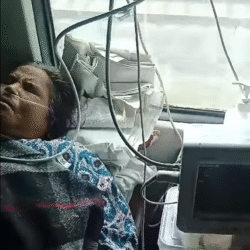What is Vaginal Cancer?
Vaginal cancer is a rare form of cancer that occurs in the tissues of the vagina, the muscular tube that connects the uterus to the outside of the body. This cancer typically begins in the cells of the vaginal lining. Although it is uncommon, understanding its symptoms, risk factors, and available treatment options is essential for early detection and better outcomes.
Symptoms of Vaginal Cancer
The symptoms of vaginal cancer can be subtle, especially in the early stages, and may be mistaken for other conditions. Common signs include:
-
Adenocarcinoma: This type of cancer originates from glandular cells that produce mucus or other fluids.
-
Melanoma: A rare and aggressive form of vaginal cancer that arises from pigment-producing cells (melanocytes).
-
Sarcoma: A rare type that begins in the connective tissues of the vagina, such as muscle or blood vessels.
Each type of vaginal cancer may have unique characteristics, affecting treatment strategies and prognosis.
Symptoms of Vaginal Cancer
The symptoms of vaginal cancer can vary widely, and in many cases, they may not be noticeable until the cancer has reached an advanced stage. The most common symptoms include:
1. Abnormal Vaginal Bleeding
Abnormal bleeding is one of the most prominent symptoms of vaginal cancer. Women may experience:
-
Vaginal bleeding after menopause (postmenopausal bleeding)
-
Bleeding between periods
-
Unusual spotting after sexual intercourse
-
Heavier or prolonged periods than usual
If vaginal bleeding occurs outside of the normal menstrual cycle, it should always be investigated by a doctor.
2. Unusual Vaginal Discharge
Women with vaginal cancer may notice unusual discharge, which can be:
-
Watery
-
Bloody
-
Foul-smelling
-
Brownish or mucous-like
This discharge may occur at any point, whether or not bleeding is present. If the discharge persists or has a strong odor, it’s essential to consult a healthcare provider.
3. Pain During Sexual Intercourse
Pain during or after sexual intercourse (dyspareunia) is another symptom that may be linked to vaginal cancer. This pain may be localized to the vaginal area or radiate into the pelvic region. Women should report any discomfort during sexual activity to their doctor, especially if it is a new symptom.
4. Pelvic Pain or Discomfort
Some women with vaginal cancer experience persistent pelvic pain or a feeling of pressure in the lower abdomen. This may occur as the tumor grows or spreads, affecting surrounding tissues and organs.
5. A Lump or Mass in the Vagina
In rare cases, a visible lump or mass in the vaginal area may be felt or seen. This is more likely to occur in advanced stages of vaginal cancer.
6. Urinary Issues
If vaginal cancer spreads to nearby organs like the bladder, women may experience difficulties with urination, such as pain or frequent urination.
It is important to remember that many of these symptoms may also be indicative of other conditions, such as infections or benign gynecological disorders. However, if they persist or worsen, a healthcare professional should evaluate them.
Risk Factors for Vaginal Cancer
Certain factors increase the likelihood of developing vaginal cancer, although having one or more of these factors does not guarantee that a person will develop the disease. Some of the most significant risk factors include:
1. Human Papillomavirus (HPV) Infection
Persistent infection with high-risk types of HPV, particularly HPV types 16 and 18, is the leading cause of vaginal cancer. HPV is a sexually transmitted virus that can cause changes in the cells of the cervix, vulva, and vagina, leading to cancer in these areas.
2. Age
Vaginal cancer is most commonly diagnosed in women over the age of 60. However, it can develop at any age, including in younger women who may have a history of HPV infection or other risk factors.
3. History of Cervical or Vulvar Cancer
Women who have had cervical cancer or vulvar cancer are at an increased risk for developing vaginal cancer. This is particularly true for women whose previous cancers were linked to HPV infection.
4. Smoking
Smoking is a well-established risk factor for many types of cancer, including vaginal cancer. The harmful chemicals in cigarettes can damage the cells of the vaginal lining and increase the likelihood of developing cancer.
5. Weakened Immune System
A weakened immune system, caused by conditions such as HIV/AIDS or the use of immunosuppressive drugs (often after organ transplantation), increases the risk of vaginal cancer. The immune system plays a crucial role in preventing cancer cells from growing and spreading.
6. DES Exposure
Diethylstilbestrol (DES) was a drug given to pregnant women between the 1940s and 1970s to prevent miscarriages. Daughters of women who were exposed to DES during pregnancy have a significantly higher risk of developing vaginal cancer.
Diagnosis of Vaginal Cancers
If vaginal cancers is suspected, a healthcare provider will perform a thorough evaluation, including:
-
Pelvic Exam: A physical examination to check for abnormalities in the vagina, cervix, and surrounding areas.
-
Colposcopy: If abnormal cells are detected, a colposcope (a special microscope) may be used to examine the vaginal tissues in more detail.
-
Biopsy: A small tissue sample is taken from the vagina and examined under a microscope to confirm the presence of cancer cells.
-
Imaging Tests: CT scans, MRIs, or ultrasounds may be used to determine the extent of the cancer and whether it has spread to nearby organs.
Treatment for Vaginal Cancers
Treatment for vaginal cancers depends on the cancer’s stage, size, and type. The main options include:
1. Surgery
Surgical treatments may involve the removal of part or all of the vagina, or even the surrounding tissues if the cancer has spread. In some cases, a hysterectomy (removal of the uterus) may also be required.
2. Radiation Therapy
Radiation therapy uses high-energy rays to target and kill cancer cells. This treatment can be used to shrink tumors before surgery or as a primary treatment for localized cancer.
3. Chemotherapy
Chemotherapy may be used to treat more advanced cases of vaginal cancers, particularly when the cancer has spread to other parts of the body. Chemotherapy drugs are used to kill cancer cells or stop their growth.
4. Targeted Therapy
Targeted therapies are newer treatments that specifically target cancer cells without harming healthy tissues. They may be used in certain cases of advanced vaginal cancers.
Prevention of Vaginal Cancers
While there is no surefire way to prevent vaginal cancers, several steps can reduce the risk:
-
HPV Vaccination: Vaccination against HPV can significantly lower the risk of developing vaginal cancers, as well as other HPV-related cancers.
-
Regular Pap Smears: Routine gynecological exams, including Pap smears and HPV tests, can help detect abnormal cells in the cervix or vagina before they develop into cancer.
-
Quit Smoking: Smoking cessation reduces the risk of vaginal cancers and other cancers.
-
Safe Sexual Practices: Using condoms can reduce the risk of HPV infection and sexually transmitted diseases that can lead to vaginal cancers.
By understanding the risk factors, symptoms, and treatment options for vaginal cancers, women can take proactive steps toward early detection and prevention. Regular screening, vaccination, and awareness of any unusual symptoms can greatly improve outcomes for women facing this rare cancer.


